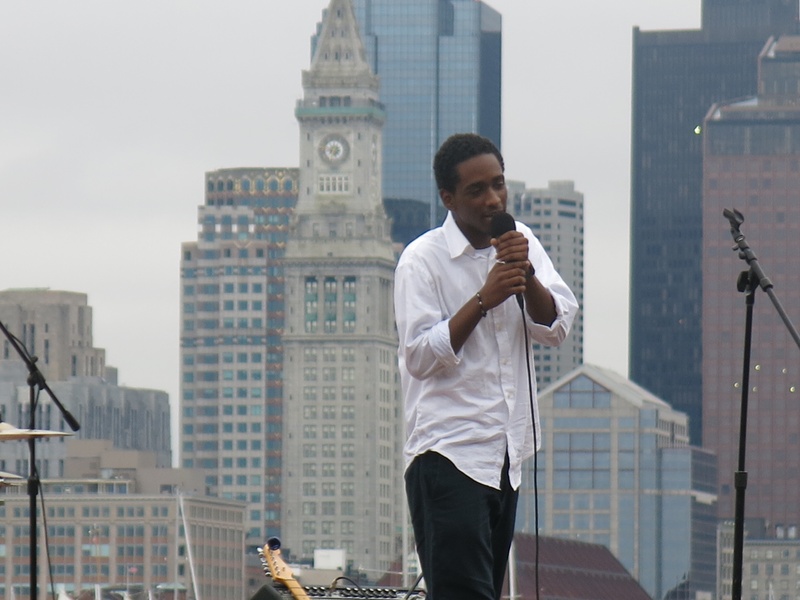The question of how to revitalize struggling neighborhoods on a limited budget is among the great challenges of 21st-century urban planning. Today, Boston’s "gateway cities”—municipalities on the city’s fringe such as Brockton, Lawrence, and Lynn, many of which are reeling from the departure of manufacturing jobs—are seeking to generate civic engagement, improve urban livability, and make their streets safer.
These communities, as well as neighborhoods within Boston, are using public art initiatives and youth art education to engage their citizens and give their economies a boost. Such programs have managed to have an unmistakable impact of young people, even in the face of budget cuts and policy changes. Though not a panacea, arts programs have shown themselves to be an important part of a long-term economic strategy for urban renewal.
A CITY REBUILDS
The city of Lynn, Mass., is an industrial city located 10 miles north of Boston. Though once a thriving manufacturing town, the collapse of the shoe industry in the 1980s has had major repercussions for its economy, and Lynn’s violent crime rate is now significantly above the state average. Centerboard is a community organization based in Lynn that seeks to support the city's revitalization and believes the arts can help effect that change.
“Not only are we giving artists a chance to show their work and be supported, we're also giving community members the chance to see some high-quality artwork in their hometown," says Carla Scheri, Centerboard’s special projects coordinator. In addition to a public gallery which exhibits works by New England artists, Centerboard has installed a series of enlarged photos on the side of the Commuter Rail stop. “Much to our delight, the photos have never been touched or defaced, and I think that speaks volumes to the value that people are placing on this public art," Scheri says.
Among the arts projects run by Centerboard is a "traveling piano" which is moved to various places in the city to encourage people to gather. Two summers ago, Centerboard hauled the piano to a train station, where it attracted a crowd of 60 weary rush hour commuters to take a break and listen to some music, or even to play some themselves.
Due in part to the efforts of groups like Centerboard, Lynn has begun to turn a corner. Recently, the Massachusetts Cultural Council designated Lynn as a Cultural District, an honor that recognizes its blend of the arts and economic potential. Scheri sees a role for the arts in building the sense of community necessary for lasting economic progress. "When you have a strong local community, everybody wins. The youth win, the homeowners win, the business owners win."
HEALING BOSTON
In the late ’80s and early ’90s, Boston was hit by a historically unprecedented wave of gang violence, with many youth representing the perpetrators and the victims. In the wake of this tragedy, community groups like the nonprofit organization ZUMIX sought to use arts to prevent similar events in the future.
“We started with 24 youth[s], $200, and the idea of connecting the youth with the arts, in particular to music,” says ZUMIX program director Jenny M. Shulman. “These original programs were intended to involve youth in an open dialogue about societal issues like gang violence as an inspiration for original songwriting and public performance.”
Since its foundation, ZUMIX has expanded to serve 1000 kids a year under a $2 million operating budget. It hosts a number of community events, including a summer concert series, concerts in the firehouse, community dance nights, film screenings, and open mics. This season's ZUMIX programs teach youth to play and record music, produce their own radio stories, and learn the foundations of acting and stagecraft. In addition to its founding mission of giving troubled youth a space for open dialogue, ZUMIX has also had an economic effect—the organization's Z-Tech program teaches young people how to engineer audio, and some graduates go on to work as paid sound technicians at Boston-area concerts.
Despite the runaway success of the ZUMIX project, Shulman acknowledges that there were many factors at play in the revitalization of East Boston, which is now no longer the violent area it was when the group was founded in 1991. “There is definitely less crime, the neighborhood has been cleaned up a lot, and there have been many public projects that have improved quality of life,” she says, citing the East Boston Neighborhood Health Center and the refurbishment of Maverick Station. “We certainly couldn't take credit for the change.”
Looking ahead, ZUMIX, whose projects mostly take place outside of school hours, will have to tailor its programming to changing public school policies. “The biggest challenge is and continues to be extended school days because it cuts into after-school programming,” Shulman says, speaking of the currently heavily debated “Expanded Learning Time” initiative in Boston Public Schools, which would increase the length of the school year by at least 300 hours, cutting into students’ free time. If the initiative passes, Shulman says ZUMIX will adapt. “We are hoping to spend more time working in schools or continue credit-earning programs where kids can fulfill their arts requirements through us.” Nevertheless, the longer school day may have an effect on ZUMIX’s enrollment and program structure.
Jean S. Whitney is the executive director of the Carl and Ruth Shapiro Family Foundation, which funds projects such as these. “These projects are not just focused on developing artistic form,” Whitney says. “They're also pulling in families and helping them to experience some of this art and give them higher aspirations for their kids. That's why we're interested in continuing to support these organizations.”
COMMUNITY ARTS GETS ELEMENTARY
Read more in Arts
Singles Roundup














